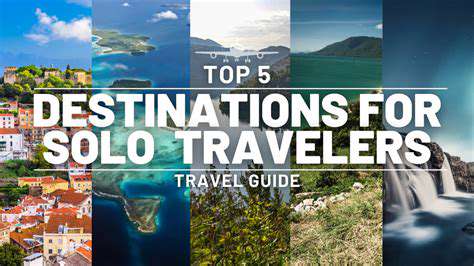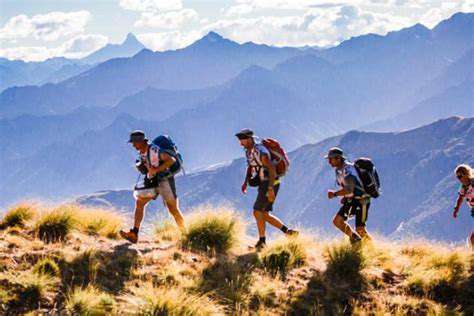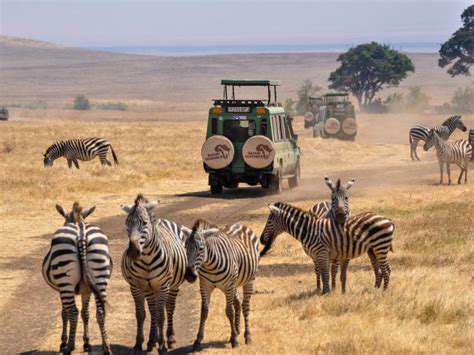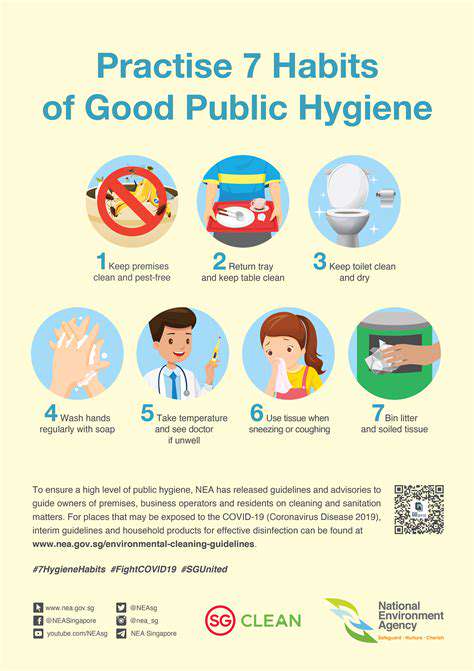Best Destinations for Aurora Borealis Viewing
Selecting Your Ideal Aurora Destination
Planning a Northern Lights adventure requires careful consideration of location. The aurora's visibility depends heavily on three key factors: atmospheric conditions, geographic position, and light pollution levels. Unlike typical vacation planning, aurora hunting demands attention to scientific variables that change nightly. I've found that rural areas near the Arctic Circle consistently offer the best views, particularly during the new moon phase when darkness is most complete.
Scandinavia remains the gold standard for aurora viewing, with Tromsø, Norway being particularly reliable. However, some lesser-known spots like Finnish Lapland or Canada's Churchill region often surprise visitors with unexpectedly vivid displays. Pro tip: The auroral oval - that ring-shaped zone around the magnetic pole - shifts daily, so checking real-time aurora forecasts becomes crucial for serious hunters.
The Fascinating Physics Behind the Light Display
What we perceive as the Northern Lights actually represents a cosmic collision event. Solar particles traveling at 1 million mph slam into our atmosphere, exciting oxygen and nitrogen molecules. These collisions release energy as light - green from oxygen at lower altitudes (60-150 miles up), red from higher oxygen (150+ miles), and purple/blue from nitrogen. The intensity varies with the sun's 11-year activity cycle, with 2024-2026 predicted to be particularly strong.
During my last trip to Iceland, a local physicist explained how Earth's magnetic field channels these particles toward the poles. This explains why the phenomenon concentrates in polar regions, though during major solar storms, auroras can sometimes be seen as far south as Scotland or Michigan.
Essential Planning Strategies for Aurora Success
After seven Northern Lights expeditions, I've learned that preparation separates successful hunters from disappointed tourists. Three non-negotiable items: thermal layers (merino wool base, insulated mid, windproof outer), a reliable weather app (Windy or Yr), and red-light headlamp (preserves night vision). Book accommodations with aurora wake-up services - many lodges now offer this.
Contrary to popular belief, complete darkness isn't always necessary. I've captured stunning photos during twilight when the aurora appeared unusually low on the horizon. The key is finding locations with unobstructed northern views - frozen lakes often work perfectly.
Field Techniques for Optimal Viewing
During my most successful hunt in Abisko, Sweden, I learned that auroras often appear strongest around midnight, but can surprise at any time. Critical mistake to avoid: giving up too early. The lights frequently emerge after hours of waiting. Local guides recommend the 20-minute rule - stay at your viewing spot for at least 20 minutes to let your eyes fully adjust.
For photography, manual settings are mandatory. Start with these baseline settings: ISO 1600-3200, f/2.8 aperture, 5-15 second exposure. Use interval shooting mode to capture the aurora's movement. Surprisingly, moonlight can actually enhance photos by illuminating foreground landscapes.
Scandinavian Aurora Hotspots: Firsthand Experiences
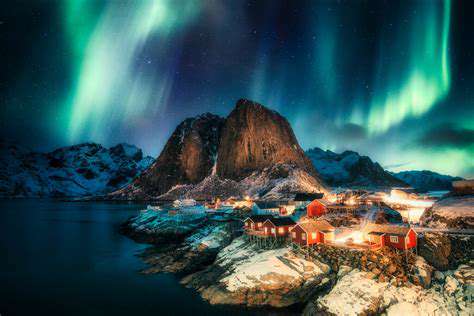
Nordic Light Viewing Secrets
While Scandinavia offers countless viewing locations, certain spots consistently outperform others. The Tromsø region's combination of coastal microclimate (fewer clouds) and accessibility makes it ideal for first-time hunters. During my visit, the Lyngen Alps provided a spectacular backdrop for particularly vivid displays.
When to Visit for Maximum Impact
Through trial and error across multiple trips, I've found the sweet spot falls between late September and early March. February offers the best balance of darkness (14+ hours nightly) and tolerable temperatures. Surprisingly, the equinox periods (March/September) often produce stronger activity due to solar wind orientation.
Choosing Your Base Camp
Remote doesn't always mean better. Some accessible locations like Sweden's Abisko National Park benefit from a unique microclimate (the blue hole phenomenon) that creates clearer skies than more distant areas. Key consideration: proximity to shelter - you'll appreciate warm retreats during long observation sessions.
Dressing for Arctic Success
After suffering through my first improperly equipped trip, I now swear by heated insoles and vapor barrier socks. The real game-changer? A down-filled sleeping bag coat that transforms any waiting period into comfortable stargazing.
Photography Insights from the Field
Beyond equipment, successful aurora photography requires understanding the lights' behavior. Pro tip: When the aurora becomes active, it often forms an arc that eventually breaks up into dramatic curtains. This transition period offers the most photogenic moments. Always include interesting foreground elements - frozen trees or traditional Sami tents add scale and context.
Responsible Aurora Tourism
The growing popularity of Northern Lights tourism brings environmental challenges. I now follow these essential practices: using established viewing areas to prevent tundra damage, carpooling to reduce emissions, and supporting indigenous-owned tour operators. The Sami people have coexisted with the aurora for millennia - their perspective adds depth to the experience.
Frontier Aurora: Alaska and Russia's Wild Light Shows
Alaska's Prime Viewing Locations
Alaska's vast wilderness offers unique aurora advantages. Fairbanks sits directly under the auroral oval, while Coldfoot provides unparalleled darkness. My most memorable display occurred near Wiseman, where the lights reflected off the Koyukuk River, doubling the spectacle.
Russia's Undiscovered Aurora Zones
The Kola Peninsula's Murmansk region offers surprising accessibility despite its remoteness. During a February expedition, I witnessed an incredible corona display (aurora directly overhead) near Teriberka that lasted nearly four hours. The lack of tourism infrastructure means more authentic experiences, though language barriers require preparation.
Advanced Hunting Techniques
Serious hunters should learn to interpret magnetometer readings (available on space weather sites) to predict substorm activity. I've found that combining this data with local cloud forecasts increases success rates dramatically. Unexpected tip: Aurora often appears stronger when viewed through polarized sunglasses - keep a pair in your kit.
